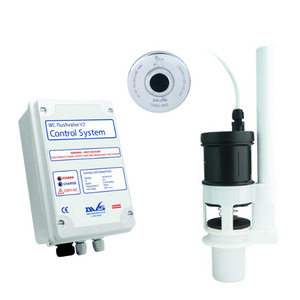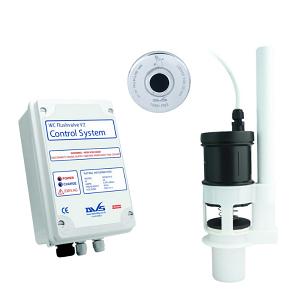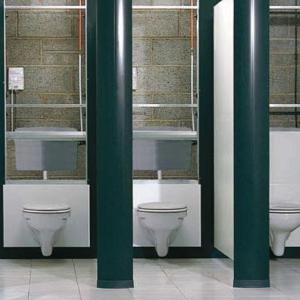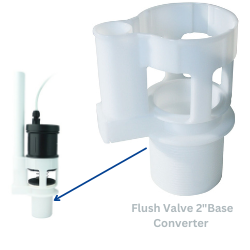KWC DVS - No-touch WC Flushvalve - Mains Power
|
Features: Why councils are fitting DVS Flushvalves Wiltshire County Council conducted extensive tests and justifies the fitting of WC Flushvalves on water savings. West Devon District Council were having major problems in public toilets with broken handles. These problems have been totally eliminated since fitting the WC Flushvalves. Hunstanton District Council put a trial of 6 valves in a toilet block with 18 WC's. The toilet block was opposite the fair ground and considered to be the most problematic of their public toilets. The 6 units where the Flushvalves have been fitted have been free of blockages and in full working order. The toilets where the Flushvalves have been fitted are also noticeably tidier and more popular. The council are now going to fit the WC Flushvalves in all their public toilets. The hygienic aspects of the no-touch WC flushing system should be an important consideration for all industries, including food factories, hospitals and anywhere where cross contamination should be avoided. Typical Savings One major airport estimated saving 200,000 M3 per annum after fitting DVS WC Flushvalves. They also significantly reduced maintenance and blockages, as well as upgrading the facilities. A council estimated payback on water savings would be around 12 months, but then found savings on maintenance were equally significant and achieved 6 months payback. Approximately 25% of water use in most buildings is WC flushing and therefore efficient flushing often offers the second most cost effective method to save water after urinal controls. |
|

Cistern kit: Plastic cistern for concealed installation behind wall or panels. Comes complete with float valve, flushpipe and fittings for back of WC pan. Valve base: Most WC cisterns will require the standard 1.5" base but newer water saving 'ECO' cisterns (providing 4L and 2.5L flushes) and some very old cisterns may require the 2" base. Please check before ordering. The 2" base option can be selected from the option lists below. |







